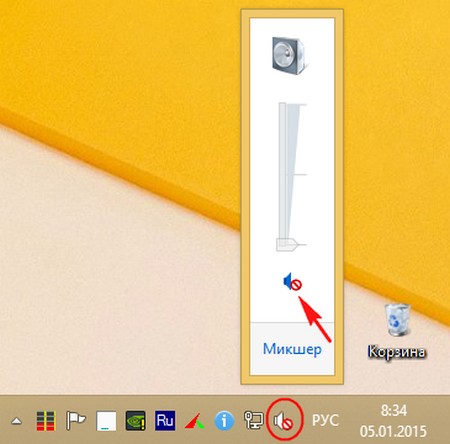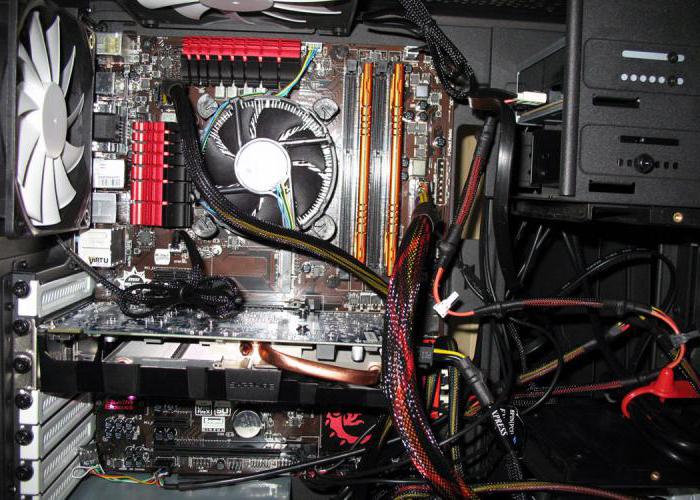We earn on the RSS feed of the blog. What RSS is made of - an inside look
We have released a new book, “Content Marketing on Social Media: How to Get Subscribers in the Head and Fall in Love with Their Brand.”

RSS is a .rss or .xml file for describing site news with a link to the full version. From English Really Simple Syndication - easy access to information, Rich Site Summary - rich resource summary.
Everyone has favorite sources that you want to come back to again and again. They are regularly updated, and if there are a lot of them, then losing new information is easy. All fresh headings are collected in one place and in a convenient format. You no longer need to check dozens of sites, just subscribe to a summary of interesting resources and be on the wave. News is marked as read unless a different mark is set. There is a grouping according to various criteria.
An RSS feed, channel, feed is a RSS resource.
Who needs it
At one time, RSS triggered a great revolution, but now its popularity is declining. Until now, many people do not know what it is, but those who use it have an advantage: they are not limited in sources, as in directories, for example. RSS perfectly cope with a large flow of information, which is superior to social networks.
RSS is suitable for those sources where the response of the audience is less needed: the feed is not suitable for commenting and likes, the reader only gets acquainted with the information. These sources can be news portals, library news, blog updates.
What RSS is made of - an inside look
- Metadata is information about data: headings, images, descriptions, hyperlinks.
- Combined metadata from a single publication.
- Categories of articles.
Popular Versions
- RDF - RDF Site Summary (RSS 0.9 and 1.0).
- RSS - Rich Site Summary (RSS 0.9x).
- RSS2 -Really Simple Syndication (RSS 2.x)
- As well as Atom, developed by Google in 2006, taking into account all the shortcomings of RSS.
RSS Feed Benefits
For the user
- All the necessary information in one place: it’s convenient to view updates and does not need to be checked manually.
- Free: resources get a reading audience in return, so any developing source will certainly create a feed for users.
- Quick notifications: a message about a new publication will not be in an hour, two, a day, but immediately after updating.
- Save traffic. A single feed will not take as much traffic as a lot of loaded pages.
For site
- Reference mass increases;
- The popularity of the resource is increasing;
- The constant reading audience of the site.
RSS Disadvantages
For sites
- Most users subscribe to sources that are at least a little liked. There is more information, and people do not have time to process it.
- Search robots index the feeds earlier than the source, due to which the latter get the filters: it receives the status of a site of little use for the user from the search engine. The solution to this problem is the refusal to post the full versions of articles and the reader’s motivation to switch to the original source.
- Theft of content. Trust sites can also steal content, and search engines will consider them the primary sources. But less fat originals will fall in the positions of search results.
- Even if the stolen content at the end has a link where the article came from, then the likelihood that the guest will continue reading after the transition is small. And without specifying a link, you should not rely on traffic at all.
- The XML language in which RSS feeds are written is convenient for parsing.
How to subscribe to RSS
To receive notifications, just find the RSS sign, copy the link address and add it to the reader. Or, instead of the button, click on the phrase “Subscribe to RSS feed”.
Readers, aggregators, browsers and RSS readers
Convenient tools for reading information feeds can save time and get the most out of date information. All that is needed is an Internet connection on the device and a reading program that flexibly adapts to the user and organizes the information in accordance with his tastes. One of the drawbacks is the inconvenient synchronization when using several aggregators at the same time: after reading the news in one, most likely, the same will be in the other.
An RSS aggregator or RSS reader is a program for reading RSS feeds: they collect links, monitor for updates and provide them in a convenient format for reading. There are special settings, notifications are displayed in the tray. Not everyone supports synchronization with mobile platforms.
Browsers
Everyone knows Google Chrome, Opera, Mozilla and other browsers have long learned to read RSS. Advantages: read anywhere: at home, at work, and customize with free tools. Among the shortcomings: a limited number of sources.
Services
Yandex.Tape and Google reader have long been closed, disputes about what is better are no longer relevant. Currently, there are many services that meet certain user requirements. Let's consider some of them.
- Inoreader The service can cache pages and read without Internet access. Appearance is configured with the tastes of the user: themes, sorting by categories, import from other reader applications. Articles are available without going to the source. There are applications for mobile operating systems.
- Feedly. Convenient news display. Available as an extension in browsers, as well as an application on mobile platforms Android and iOS. Limitation to one hundred resources. Sort by categories.
- Palabre. Android app. News display is configured with flexible settings. Available sorting by category, reading the article completely in the application and downloading for offline access. There is a premium version without ads.
- Digg. Minimalistic design. There is a function for saving articles, settings for display, import from OPML files. Available in browser extensions. Buttons of social networks for duplication in social networks.
- Newsflow A free program installed in Windows 10. The type of news is customizable, and articles are read directly in the application, including watching videos. Unlimited number of sources.
- Opera It has a built-in engine for reading RSS feeds. It has a little functionality.
Programs
- For Linux: Liferea, Akregator.
- For Windows: Omea reader, Mozilla Thunderbird, Awasu.
- For MacOSX: NewsLife, Newsfire.
How to add RSS to the site
You can place RSS on the site in several ways:
- Manual creation of XML code. The principles of HTML and RSS are similar: in both cases, the technology of placing text files is used. RSS uses the RDF standard, from the English Resource Description Framework, i.e. Resource Description Schema. It is based on XML, which in turn has two of its templates: OCS and OPML. It is possible to create a tape using other programming languages, if such skills exist. For example, C #.
- Ribbon generators, for example: feed43, dapper, feedity, feedburner.
- Additional tools offered by various website creation platforms, for example, Blogger, Vox, WordPress. Here you do not need to have knowledge of programming languages, systems provide a ready-made template with a title, description, metadata and other necessary material for working with news.
Thus, RSS is a convenient technology for both users and webmasters. Visitors have the opportunity to collect all the sites of interest to them in one place and read their updates without manually checking each individually. In addition, they can customize the appearance of the news. This is free, because the site receives in return a target audience that is interested in the material. The reference mass rises, behavioral factors improve. The resource is becoming popular.
RSS (Really Simple Syndication) can be translated as "truly simple acquisition of information." RSS feeds allow you to quickly receive all updates from a signed resource ...
This is a very convenient option for sending content, which reduces the time of visitors. Of course, if the reader is interested in only one site, then the use of RSS will not play a big role for him. However, a standard user, as a rule, keeps track of the necessary information on a dozen blogs or sites.
This is where the benefits of use manifest themselves. With just one click of the mouse, you can collect all the latest information from the resources you are interested in.
Such collective information comes in the form of a kind of "news feed", which makes it easy to navigate to which site you should go first to learn more about the material.
In addition, subscribing to RSS eliminates spam, which very often appeared after the standard addition of a mailbox to receive newsletters.
For site owners, an RSS feed can be quite good. It should be noted that in order to use RSS more efficiently, you should format shortened feeds (messages). A shortened version will prompt the user to go to your resource.
However, if you are guaranteed to offer unique and, most importantly, useful content, then the need for reduction goes away, since the visitor will be attracted to your resource directly by the quality of the information itself. In this case, the traffic will be not only targeted, but also constant ...
Read more:
-
Each more or less decent site should have an RSS feed. If...
‾‾‾ -
The Internet is evolving more and more, users are becoming more advanced and so on ...
‾‾‾
I already talked about how RSS technology works. But since in this blog everything is viewed through the prism of monetization, I’ll tell you how you can make money on rss.
To begin with, I will say why this type of earnings is generally popular and why I see a perspective in it.
The bottom line is that today RSS is becoming increasingly popular and becoming a more convenient means of tracking news. Each blogger strives to increase the number of regular followers (i.e. RSS subscribers).
But, of course, they do not proceed only from the position of monetization. Blog RSS Subscribers is a Blog Pillow. Suddenly, search engines will ban your blog. What then? Then you’ll have to rely only on local traffic, which are RSS subscribers. And the more such subscribers, the better this airbag.
At all, rSS monetization - this is not a new thing. Wise men from our, domestic blogosphere have long been making money on RSS. But perhaps you don’t know anything about it at all, so it will not be out of place to raise this topic again.
The first and most common method. Google Adsense Ads in Your RSS Feed
This is done using Feed Burner. If you do not already have an RSS feed, then add it to FeedBurner. If you don’t have your Google AdSense account yet, create one. However, please note that if you already have a Google account, this does not mean that you can immediately go to AdSence, because for it you need to register a separate account. When you sign up for AdSence, go to “AdSense Setup \u003e\u003e AdSense for Feeds." Next, choose your feed, and configure it as you like.
After that, as a rule, after 10 minutes, themed blogs of the AdSence contextual advertising will begin to appear in your RSS feed. You can choose to display only text, you can only graphic images, but you can make it to display both.
Of course, monetizing RSS is not such an easy task. Profit from the same AdSence goes much more from the site itself than from the RSS feed. In order to earn at least a hundred bucks on RSS, you need to have many subscribers and often write on relevant topics that will be highly paid by advertisers.
The second way. Sell \u200b\u200bsponsored links in your RSS feed
Depending on your blog engine (see also the post), you can add text or image ads in RSS. For example, in my favorite WordPress blog engine this feature is present. Due to this, you can sell sponsored links in your feed. They will be located either at the bottom of the post, or above it.
Depending on where you indicate. Just again, understand that RSS monetization in this way is only possible due to the large number of subscribers. The theme of your project also plays an important role. For example, in the SEO topics that I have long lived in, there are plenty of advertisers who are interested in advertising of this kind.
The third way. Sell \u200b\u200bbanner ads in your RSS feed
I’ll say right away that I don’t know how much you can earn on RSS in this way, because I have not used it myself. In general, I want to say that few people saw banners in the feed. But in general I saw. The meaning here is the same as in the previous methods. Only the advertiser’s banner will be displayed in the RSS feed of our blog. My guess is that the clickability of such banners will not be very high.
As you can see, making money on RSS is real only with a sufficient number of RSS subscribers to the blog. I think that this should be at least 200-300 subscribers. With lower rates you should not poke your head. An exception will be only if you have an expensive topic.
(1 ratings, average: 5,00 out of 5)




